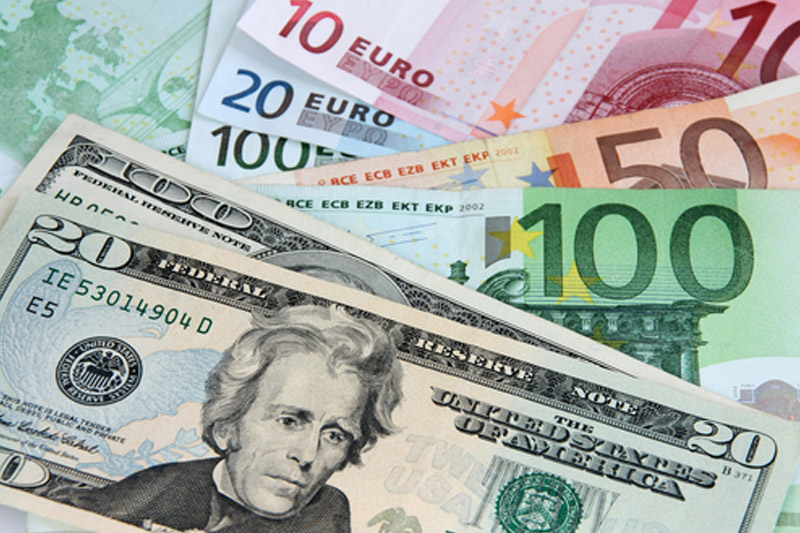Investing.com -- EUR/USD fell sharply on Thursday amid continued instability in Greece and strong economic data in the U.S.
The euro fell 0.0086 or 0.78% in U.S. afternoon trading to 1.0885. The pair moved above 1.10 at 1.1056 on Thursday morning to 1.1056 after opening at 1.0972. It also dipped below 1.086 on a volatile day of trading.
EUR/USD likely received support at 1.05 its low from Mar. 11 and resistance at 1.14 its high from mid-February.
Earlier this month, EUR/USD appeared to be headed toward parity after depreciating rapidly following the release of a strong U.S. jobs report on Mar. 6. The improved economic outlook fueled speculation of a sooner than expected interest rate hike by the Federal Reserve.
The euro, however, rallied at the middle of last week following relatively dovish comments from Fed chair Janet Yellen on slower long-term increases for inflation, interest rates and GDP. Some analysts interpreted the comments as a signal that the Fed could wait until after its meeting in June to institute a rate hike.
One European bank, though, forecasts that parity could occur ahead of previous estimates. The London bank Barclays (LONDON:BARC) said on Thursday it expects parity by the third quarter of 2015, up from prior forecasts of the fourth quarter this year. Convergence in monetary policy between the U.S. and Europe could be the biggest driver in the march to parity, Barclays added. While the U.S. is expected to tighten monetary policy at some point this year, the European Central Bank is in the first month of its €60 billion a month quantitative easing program that is intended to jumpstart investments in the euro zone.
"The two main drivers we identified of euro weakness low economic returns to capital and the European Central Bank's commitment to lower rates for longer -- have probably increased a bit more. said Martin Barth, Barclays European head of foreign trading at a company presentation on Thursday. "There's the incredible economic divergence between the two regions."
Also on Thursday, Federal Reserve Bank of Atlanta chairman Dennis Lockhart told CNBC that he would wait until the middle of the year or perhaps even later before raising rates. Lockhart's comments came after a mix of economic indicators this week that could cause the Fed to exercise greater caution.
In addition, the U.S. Department of Labor said on Thursday that individuals filing for initial jobless benefits in the week ending Mar. 21 declined by 9,000 to 282,200. Analysts expected initial jobless claims to fall by 1,000 to 290,000 last week. One day earlier, however, U.S. durable goods orders fell by 1.4% for the month of February, marking the sixth straight month that U.S. business investment spending had declined.
In Berlin, meanwhile, Germany finance minister Wolfgang Schäuble blamed low interest rates for unstable economic conditions in the country.
"We have an interest rate environment that is creating huge problems for us in Germany. A low interest rate environment leads to a misallocation of resources with all the risks and side effects that you see when bubbles are forming," Schäuble said at a banking event in Berlin.
In recent weeks, Schäuble has been one of the most vociferous critics of the euro zone for its handling of the Greece Debt Crisis. On Thursday, Greece said it would present a list of reform measures to its euro zone creditors by next Monday. It is expected that Greece will include reforms to boost tax revenues as part of its plan.
Yields on U.S. 10-Year Treasuries increased 0.076 on Thursday to close at 1.996. The yield is still down more than 10 basis points from its level at the start of the year. Yields on the German 10-Year bunds were flat at 0.22.
